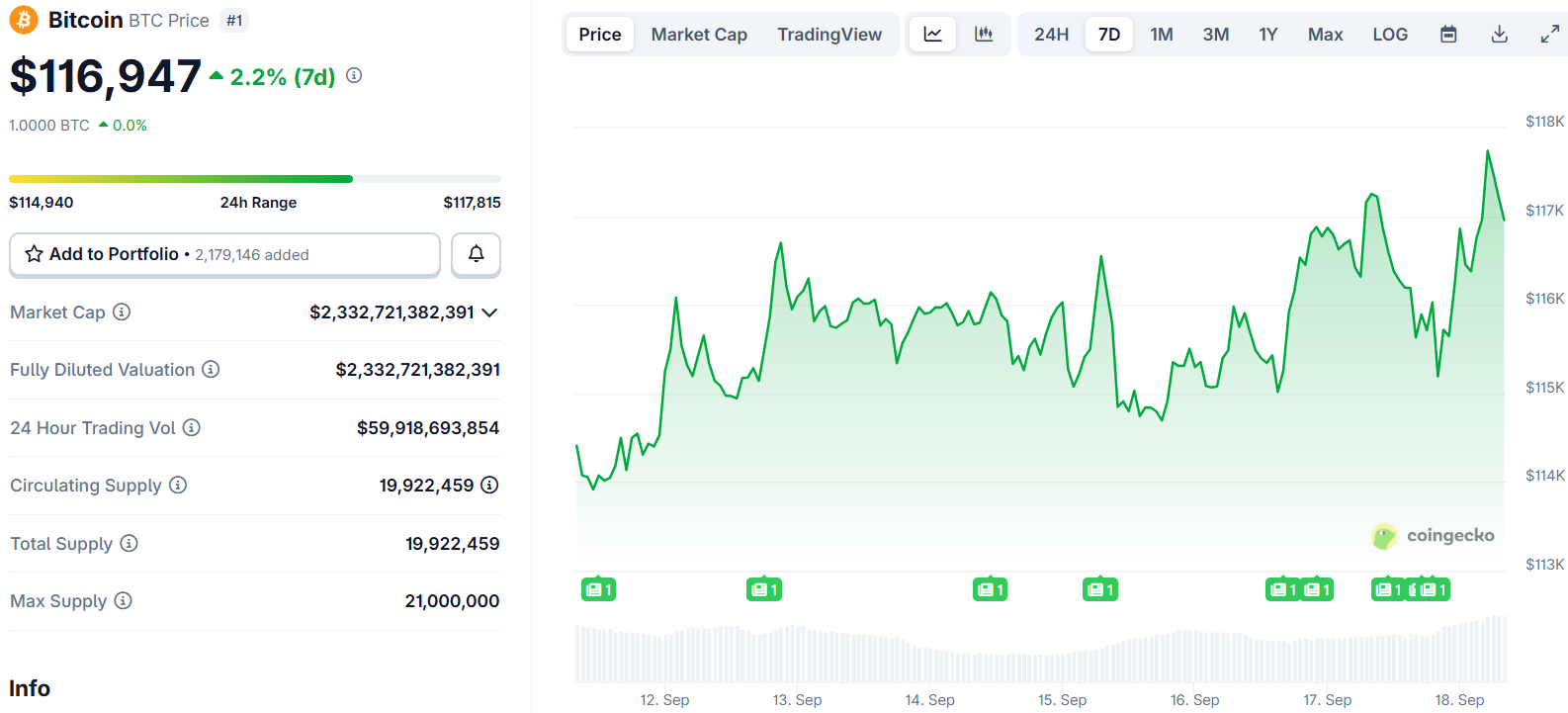TLDR
- Federal Reserve cuts benchmark rate 25 basis points to 4%-4.25%, first reduction since December 2022
- Bitcoin trades at $116,325 with potential rally to $210,000 based on 2024’s 80% post-cut surge
- Institutional whale purchases $680 million worth of BTC, showing continued confidence at current levels
- October historically delivers 22.9% average returns for Bitcoin during “Uptober” seasonal trend
- Fed dot plot suggests accelerated easing pace could create asymmetric upside for crypto markets
Bitcoin price action remains in focus following the Federal Reserve’s decision to cut interest rates for the first time in nearly ten months. The central bank reduced its benchmark rate by 25 basis points to 4%-4.25% on September 17.
Fed Chair Jerome Powell characterized the move as “risk management” amid cooling economic conditions. The decision follows mounting evidence of labor market weakness and rising economic uncertainty.
Bitcoin initially gained 1% following the announcement before retreating. The cryptocurrency currently trades around $116,325 with analysts watching for potential breakout moves ahead.

Historical Fed Cuts Drive Crypto Rallies
Market observers are highlighting parallels to September 2024 when Bitcoin surged 80% following a Fed rate cut. If similar momentum develops, BTC could target the $210,000 level based on mathematical projections.
Research from Kobeissi Letter analyzed 20 rate cut cycles since 1980. The study found stocks typically gained 14% in the year following monetary easing decisions.
While Bitcoin operates independently from traditional equities, it has shown correlations with risk assets during periods of Fed accommodation. This relationship supports bullish crypto narratives in lower rate environments.
Crypto analyst Lark Davis noted Bitcoin’s consistent performance during September Federal Open Market Committee meetings since 2020. The token climbed from $10,000 in 2020 to $64,000 in 2024 during post-September windows, excluding 2022’s bear market.
Institutional capital continues flowing into Bitcoin through major purchases. On September 16, a single wallet acquired $680 million worth of BTC, demonstrating confidence from large-scale investors.
U.S.-listed Bitcoin ETFs have maintained steady inflows from traditional finance participants. Trading volume exceeded $41.8 billion, indicating sustained market participation across investor categories.
However, historical data shows mixed outcomes following rate cuts. Out of 22 studied rate reductions, 11 were followed by monthly stock declines, highlighting potential short-term volatility risks.
October represents Bitcoin’s strongest seasonal period with average monthly returns of 22.9%. The “Uptober” effect typically results from year-end liquidity flows and reduced selling pressure patterns.
A 2019 study in Finance Research Letters found FOMC announcements had modest 0.26% average effects on Bitcoin prices. The research suggested market psychology and adoption trends drive more meaningful price movements than Fed policy alone.
Matt Mena from 21Shares noted the Fed’s dot plot signals openness to faster easing if economic conditions deteriorate. This creates potential asymmetric upside scenarios for Bitcoin heading into year-end trading.
Bitcoin Price Prediction
Seven of 19 Fed participants expect rates to remain steady through 2025. However, a slight majority believes two additional rate cuts could occur before year-end.
The combination of institutional buying, seasonal tailwinds, and accommodative monetary policy creates multiple bullish catalysts for Bitcoin. Current trading at $116,325 represents a potential launching pad for moves toward six-figure territory based on historical precedents.


